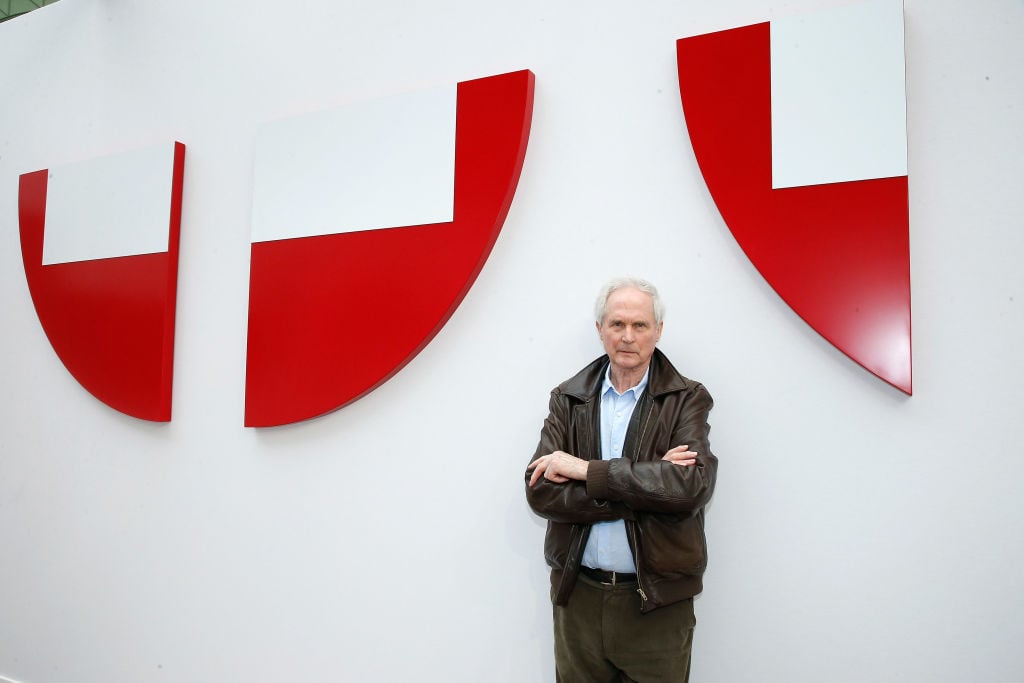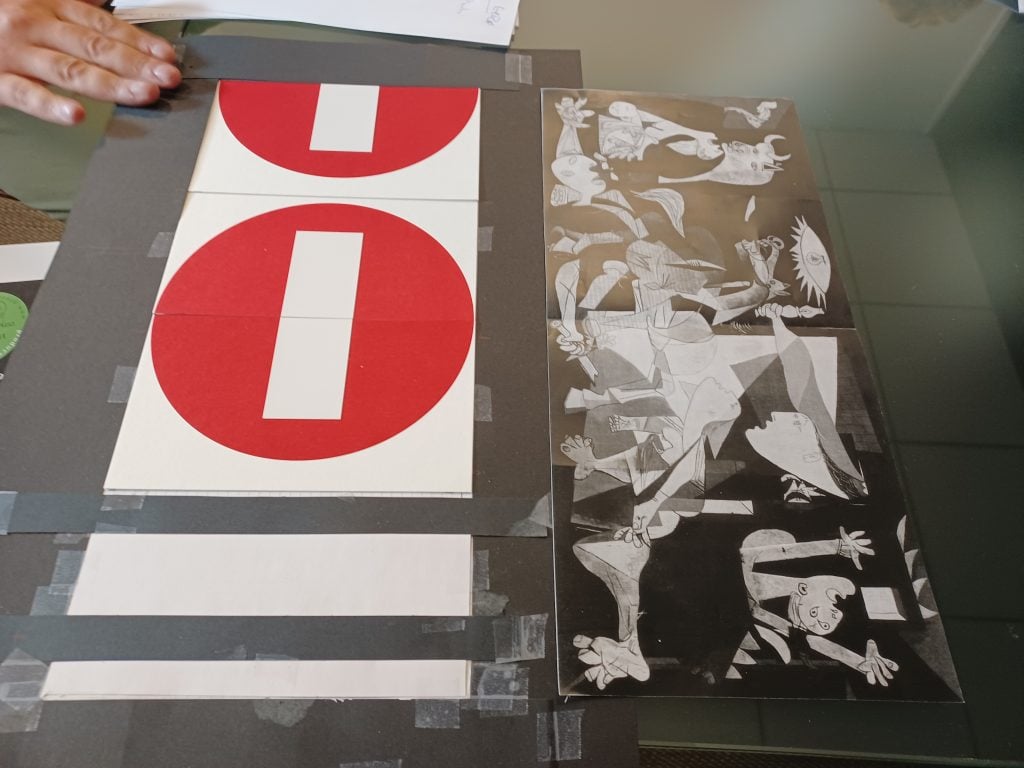Politics
French Artist Jean-Pierre Raynaud Made a Rendition of Picasso’s ‘Guernica’ to Donate to Ukraine on the One-Year Anniversary of the War
Ukraine's ambassador to France will accept the painting on behalf of his country.

Ukraine's ambassador to France will accept the painting on behalf of his country.

Taylor Dafoe

Today, on the one-year anniversary of Russia’s invasion of Ukraine, French artist Jean Pierre Raynaud debuted an homage to Pablo Picasso’s 1937 anti-war masterpiece, Guernica.
The artwork was unveiled this morning at Paris’s Pantheon-Sorbonne University, and was installed opposite a printed reproduction of Picasso’s painting. It will remain on view through April 24, at which point it will be given to Vadym Omelchenko, Ukraine’s ambassador to France.
In an interview with the Art Newspaper, Raynaud explained that the idea for the piece came from the French print publisher Baudouin Jannink.
“He said to me, ‘Picasso made Guernica against the horrors of war, I suggest that you express yourself on the aggression of Ukraine by making a work that would be its contemporary counterpart,’” Raynaud recalled. “I responded positively. On the one hand, I am on the side of the attacked country, on the other, Picasso’s work is exemplary: with it, art was able to provide a universal response to horror.”

A print of Pablo Picasso’s Guernica (1937) next to a sketch of Jean-Pierre Raynaud’s homage. Courtesy of the artist.
Those viewing Raynaud’s painting without context may struggle to find any connection to Guernica, a late-cubist, monochromatic composition completed after the titular Spanish town was bombed by the Nazis in 1937. Raynaud’s interpretation shares the exact dimensions of Picasso’s canvas, but little else. It doesn’t feature any of the dying soldiers or gored animals, nor the expressionistic depictions of violence.
Instead, on Raynaud’s canvas are two red “do not enter” circles accompanied by a pair of parallel black lines. The whole thing looks more like a street sign than a political statement.
But those symbols, which have been among the now-83-year-old artist’s visual language since the early 1960s, are meant to convey a similar emotionality as that of the figures literally being torn apart by war in Picasso’s iconic scene.
Al artista francés Jean-Pierre Raynaud le han encargado una versión del Guernica para Ucrania. Voilà pic.twitter.com/JLTZEM9NVQ
— Antonio Delgado (@adelgadoRne) February 24, 2023
Raynaud told the Art Newspaper that he chose his road-recognizable symbols because they make viewers “feel the fear as a child of four years feels it, in an instinctive and intimate way.”
“I use signs that act upstream of judgment and analysis, warning signs that bring us together like the fact that we are born and disappear one day brings us together,” the artist went on. “We all have to deal with this sign: violence.”
“This work is of crucial importance in reminding us of the freedom we have, and that which they no longer have,” added Yann Toma, an artist and Sorbonne professor, in a statement.
Eventually, Raynaud’s untitled canvas will be transferred to the National Museum of Art in Kyiv. Until then, it will be stored at the Picasso Museum in Paris.
More Trending Stories:
5 Breakout Artists We Discovered at the Los Angeles Art Fairs Whose Work Stopped Us in Our Tracks